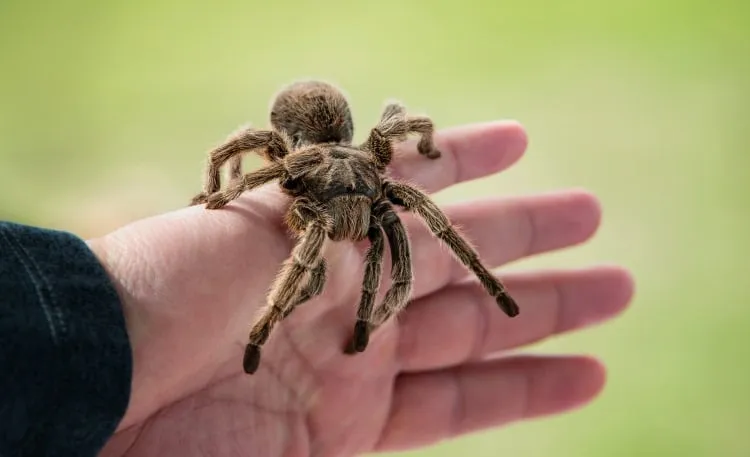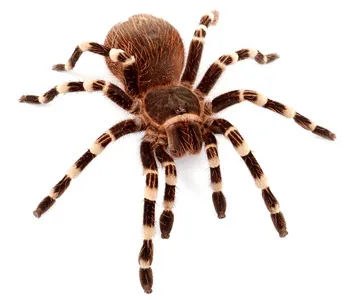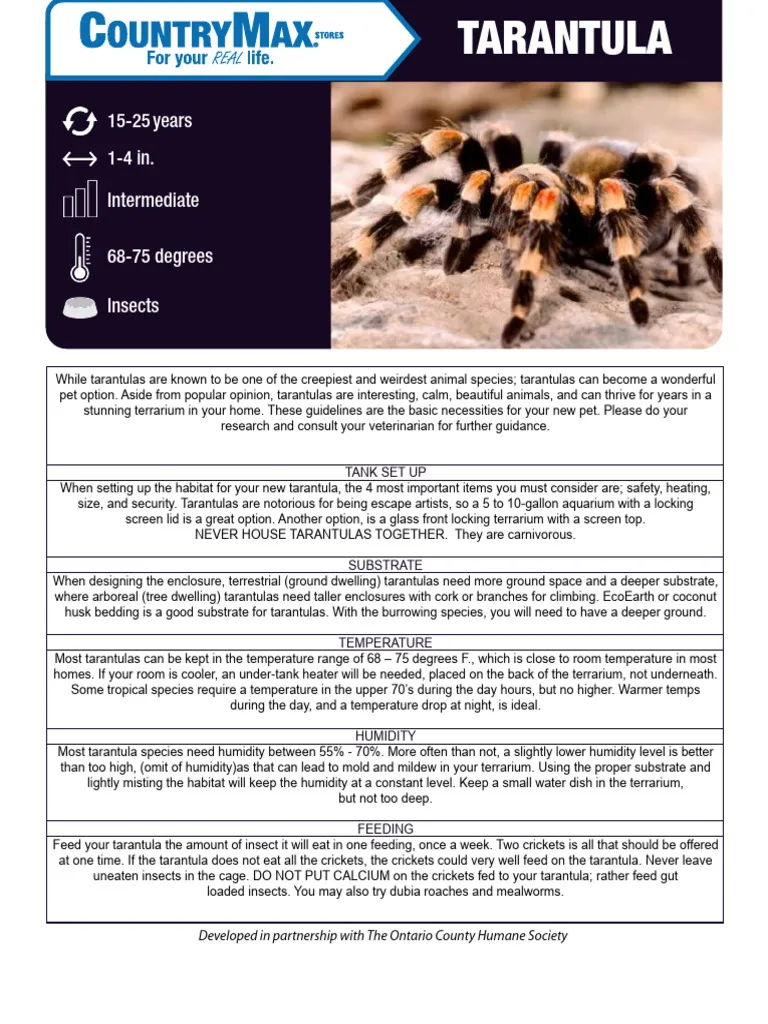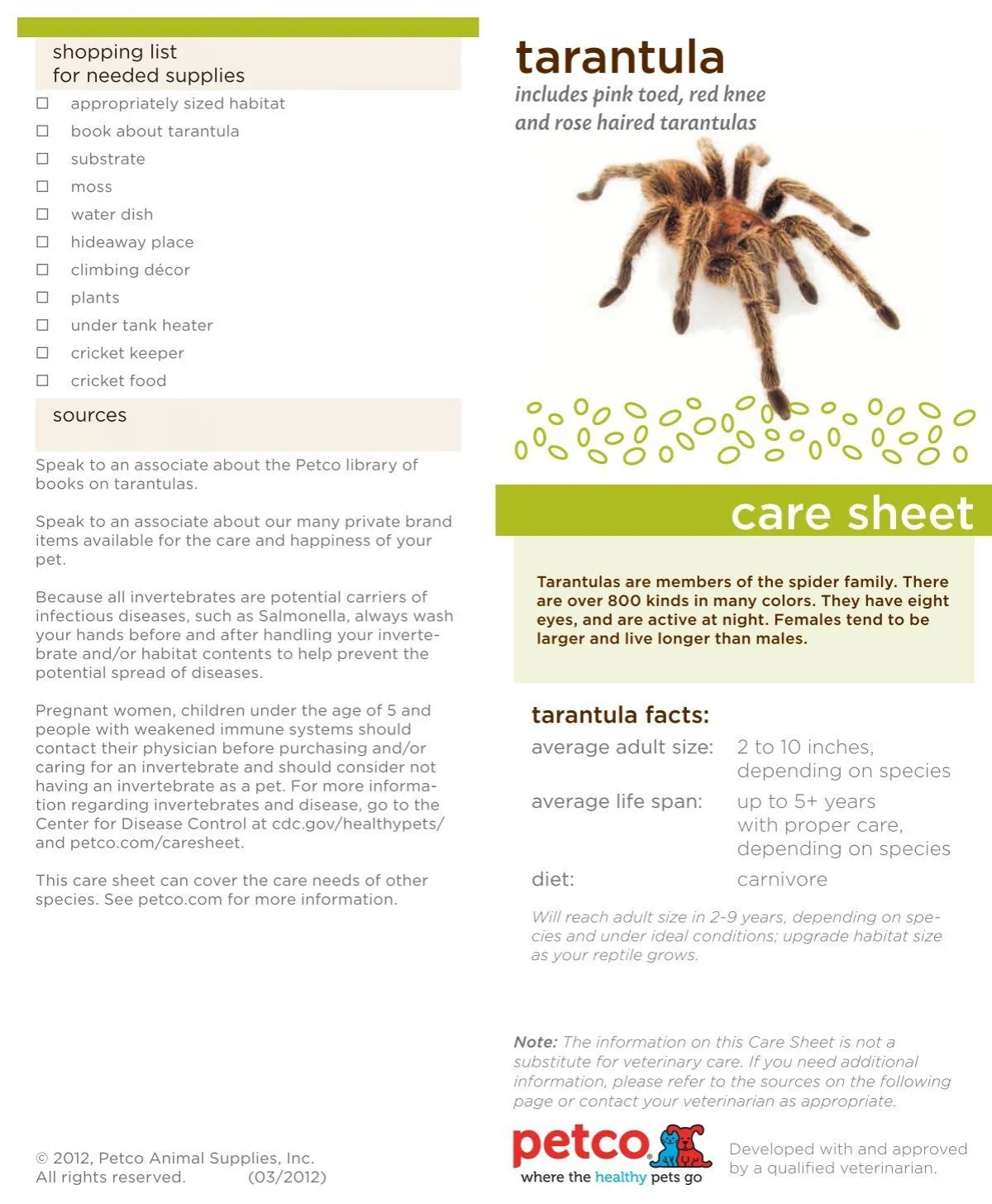Understanding Pet Tarantulas
Pet tarantulas, with their impressive size and unique personalities, have become increasingly popular among exotic pet enthusiasts. Before you bring one home, it’s crucial to understand what makes these fascinating creatures tick. This comprehensive guide will delve into every aspect of pet tarantula care, from selecting the right species to ensuring their health and longevity. Understanding their needs is the first step in providing a happy and healthy life for your eight-legged companion. Owning a tarantula is a rewarding experience, but it does come with responsibilities, including proper housing, feeding, and handling.
Choosing the Right Tarantula Species
Not all tarantulas are created equal when it comes to pet ownership. Some species are more docile and easier to care for than others, making them ideal for beginners. Researching different species is paramount. Consider factors like temperament, venom potency, and growth rate before making a decision. The choice will significantly impact your experience as a tarantula keeper.
Popular Tarantula Species

Several tarantula species are well-suited for beginners. The Chilean Rose Hair Tarantula (Grammostola rosea) is known for its docile nature and relatively low-maintenance care requirements. The Mexican Red Knee Tarantula (Brachypelma hamorii), with its striking orange and black markings, is another popular choice. Other options include the G. pulchra (Brazilian Black) and various other species of the genus Grammostola, which are generally known for their calm demeanors.
Things to Consider Before Getting One
Before acquiring a tarantula, reflect on your lifestyle and commitment. Tarantulas can live for many years, and they require consistent care. Ensure you can provide a suitable habitat, including appropriate space, temperature, and humidity. Assess your comfort level with insects, as tarantulas are primarily insectivores. Consider whether you have allergies or other health concerns that might affect your ability to care for your pet. Finally, research local laws regarding exotic pet ownership.
Setting Up Your Tarantula’s Habitat
Creating the right environment is crucial for your tarantula’s well-being. Their habitat should mimic their natural surroundings to ensure they thrive. A well-designed enclosure is more than just a cage; it’s a home that provides security, comfort, and the necessary conditions for survival and health. Consider the following components when designing the living space of your pet.
Enclosure Size and Type

The enclosure size should be appropriate for the tarantula’s size and species. A general rule is to provide an enclosure that is at least twice as wide as the tarantula’s leg span. Terrestrial tarantulas, which live on the ground, benefit from more floor space, while arboreal species, those that live in trees, need more vertical space for climbing. Glass terrariums or clear plastic enclosures are common choices, allowing easy viewing of your pet.
Substrate Selection
The substrate is the material that covers the bottom of the enclosure. It provides a comfortable surface for the tarantula to walk on, helps regulate humidity, and allows the tarantula to burrow, which is a natural behavior. Suitable substrate options include a mix of peat moss, coconut fiber, vermiculite, and potting soil (without fertilizers or pesticides). The depth of the substrate should be enough to allow the tarantula to burrow safely and comfortably.
Temperature and Humidity Control
Tarantulas are ectothermic, meaning they rely on external sources to regulate their body temperature. Maintaining the correct temperature range is crucial for their health. Use a thermometer to monitor the enclosure temperature. Provide a temperature gradient, with one end of the enclosure slightly warmer than the other. Humidity is also essential, as it helps the tarantula to molt properly. Regularly misting the enclosure with dechlorinated water or providing a water dish will help to maintain the correct humidity levels. Use a hygrometer to monitor the humidity.
Feeding Your Tarantula

Proper nutrition is vital for your tarantula’s health and longevity. Feeding your pet requires a good understanding of what tarantulas eat, how often to feed them, and how to provide fresh water. Your care in providing the correct diet and hydration will help keep your tarantula healthy and thriving.
What Tarantulas Eat
Tarantulas are primarily insectivores, meaning they eat insects. The best food source for your tarantula is live insects. Commonly used feeder insects include crickets, mealworms, dubia roaches, and superworms. The choice of insects should be based on the size of your tarantula, as the food should be appropriately sized for your pet to consume. Avoid feeding your tarantula insects caught outdoors, as they may carry pesticides or parasites.
Feeding Frequency and Methods
The feeding frequency depends on the tarantula’s age, species, and growth rate. Young tarantulas (spiderlings) need to be fed more frequently than adults. Generally, spiderlings can be fed every other day, while juveniles and adults can be fed once or twice a week. Remove any uneaten insects within 24 hours. Overfeeding can lead to a bloated abdomen, making it harder for the tarantula to move. Also, the insect can harm the tarantula during molting.
Watering and Hydration

Providing a clean water source is essential for your tarantula’s health. Provide a shallow water dish with fresh, dechlorinated water at all times. The water dish should be shallow enough to prevent the tarantula from drowning. Regularly check and refill the water dish. Some tarantula keepers also mist the enclosure to provide humidity, especially during the molting process.
Handling and Safety Precautions
Tarantulas are not generally recommended as animals to handle. While some species are more docile than others, all tarantulas have the potential to bite, inject venom, or release urticating hairs, which can cause skin irritation. Handling should be kept to a minimum, and only if necessary. If you choose to handle your tarantula, prioritize your safety and the well-being of your pet.
Safe Handling Practices
If you must handle your tarantula, do so with extreme caution. Always approach the tarantula calmly and gently. Use a soft brush to gently guide the tarantula onto your hand. Avoid sudden movements that might startle the tarantula. Always handle your tarantula over a soft surface, such as a bed or couch, in case it falls. Wash your hands thoroughly before and after handling.
Recognizing Signs of Stress

Tarantulas can exhibit stress behaviors. Recognizing these signs is crucial for their welfare. If your tarantula is defensive, such as raising its front legs or flicking hairs, it’s best to leave it alone. Avoid handling your tarantula if it appears stressed or agitated. Other signs of stress include excessive hiding or lack of appetite. Maintaining a proper environment and minimizing disturbances can help to reduce stress.
Health and Common Issues
Like all pets, tarantulas can experience health problems. Understanding common issues and how to prevent them is key to keeping your tarantula healthy. Proper care, including a suitable habitat, correct diet, and appropriate handling, can go a long way in preventing health problems. Regular observation of your tarantula’s behavior and appearance can help you catch any problems early on.
Molting and What to Expect
Molting is the process by which tarantulas shed their exoskeletons to grow. This process is natural and essential for their growth. During molting, tarantulas are vulnerable and should not be disturbed. You’ll notice changes in the tarantula’s behavior, like decreased activity and loss of appetite, before molting begins. Provide a humid environment and avoid handling your tarantula. After molting, the new exoskeleton will be soft, and the tarantula will need some time to harden before feeding.
Common Tarantula Diseases and How to Prevent Them

While tarantulas are relatively hardy, they can be susceptible to certain diseases. Fungal infections can occur if the enclosure is too humid or lacks proper ventilation. Parasites are less common but can be transmitted through contaminated food. Preventing diseases involves maintaining a clean enclosure, providing a balanced diet, and quarantining new tarantulas before introducing them to your collection. Regularly inspect your tarantula for any signs of illness, such as lethargy, loss of appetite, or unusual growths.
Lifespan and Growth
Understanding the lifespan and growth of your tarantula is important for long-term care. The life expectancy varies greatly between species, with females often living much longer than males. Proper care, including appropriate housing and feeding, significantly impacts their growth and overall lifespan. Be prepared to care for your pet for a considerable amount of time.
Understanding Tarantula Lifespan
Tarantulas can live for many years. Some species, especially females, can live for over 20 years. Male tarantulas typically have shorter lifespans, often only living for a few years after reaching maturity. The lifespan depends on species, care, and environmental conditions. Providing optimal care increases the chances of a long and healthy life for your tarantula.
Factors Influencing Growth
Several factors influence a tarantula’s growth. Proper nutrition, including a varied diet of appropriately sized insects, is essential. Temperature and humidity also play a role. Warm temperatures and adequate humidity promote faster growth. Molting is a key part of the growth process. During molting, the tarantula sheds its old exoskeleton and reveals a new, larger one. The frequency of molting decreases as the tarantula matures.
